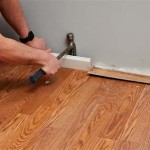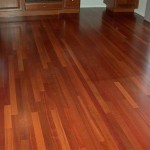Essential Aspects of Tongue and Groove Porch Flooring Nails
Tongue and groove porch flooring nails play a crucial role in the installation and durability of your outdoor flooring. These specialized nails are designed to secure the tongue and groove joints of the flooring planks, ensuring a strong and stable deck surface. Understanding the essential aspects of these nails will help you make an informed decision when choosing and using them for your porch flooring project.
Material and Finish
Tongue and groove porch flooring nails are typically made from galvanized steel, which provides excellent corrosion resistance and prevents rusting. The nails are available in different finishes, including bright (uncoated), hot-dipped galvanized, and stainless steel. Bright nails are suitable for covered porches with minimal exposure to the elements, while hot-dipped galvanized or stainless steel nails are recommended for exposed porches or decks that experience moisture and sunlight.
Sizes and Lengths
The size and length of the nails you choose will depend on the thickness of the flooring planks. Nails are commonly available in diameters ranging from 0.120 inches to 0.244 inches and lengths ranging from 1.25 inches to 4 inches. It's essential to select nails that are long enough to penetrate both the tongue and groove joints, as well as the subflooring below. Refer to the manufacturer's guidelines for the specific nail size and length recommended for your flooring planks.
Head Styles
Tongue and groove porch flooring nails come with different head styles, including flat, clipped head, and countersink head. Flat head nails are used with flooring planks that are not grooved on the surface. The nail head sits flush with the surface of the plank when properly installed. Clipped head nails are designed to be driven below the surface of the plank, creating a cleaner and more aesthetic appearance. Countersink head nails have a small hole in the center of the head, allowing you to countersink the nail using a nail set or a hammer and nail. Countersunk nails provide a recessed finish, which is ideal for creating a smooth and seamless deck surface.
Ring Shank and Barbed Shanks
Ring shank and barbed shank nails provide increased holding power, reducing the risk of the nails pulling out over time. Ring shank nails have small rings or grooves around the shank, which bite into the wood and prevent the nails from moving. Barbed shank nails have small barbs or ridges along the shank, which create friction and increase the nail's resistance to pulling out. Ring shank and barbed shank nails are recommended for high-traffic areas or exposed decks subject to heavy foot traffic or weather conditions.
Conclusion
Choosing the right tongue and groove porch flooring nails is essential for ensuring the longevity and stability of your outdoor flooring. Consider the material, finish, size, head style, and shank type to match your specific needs and the conditions your deck will be exposed to. By selecting high-quality nails and following proper installation techniques, you can create a durable and beautiful porch flooring that will enhance the enjoyment of your outdoor living space for years to come.

Fixing A Rotten Tongue And Groove Porch Floor The Craftsman Blog

Wood Porch Flooring Tongue And Groove Decking

Fixing A Rotten Tongue And Groove Porch Floor The Craftsman Blog

How To Install Tongue And Groove Porch Flooring Home Painters

Ipe Tongue Groove Porch Flooring Installation With Trimtite S

How To Install A Tongue And Groove Ceiling The Unprofessional

Fixing A Rotten Tongue And Groove Porch Floor The Craftsman Blog

How To Install Tongue And Groove Porch Flooring Home Painters

Fixing A Rotten Tongue And Groove Porch Floor The Craftsman Blog

Porch Flooring 4 How To Build A Decking








